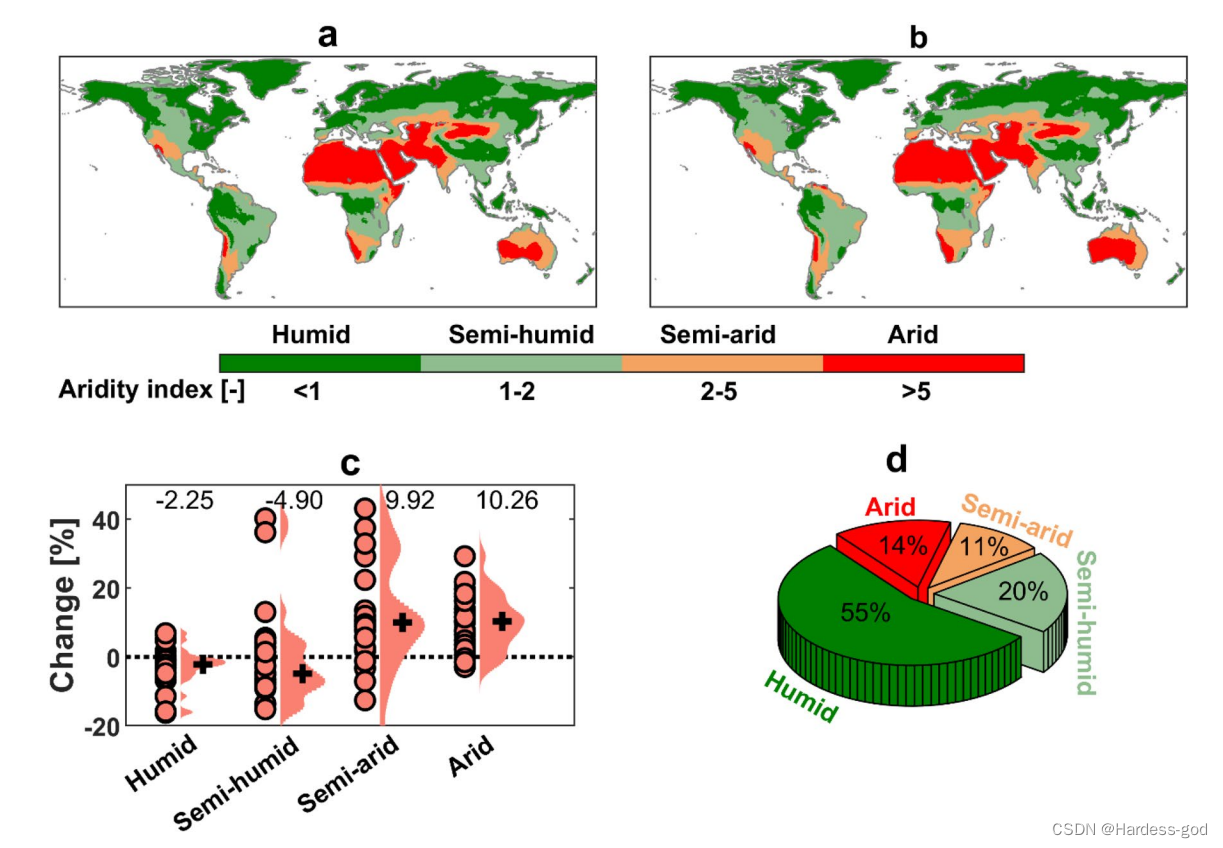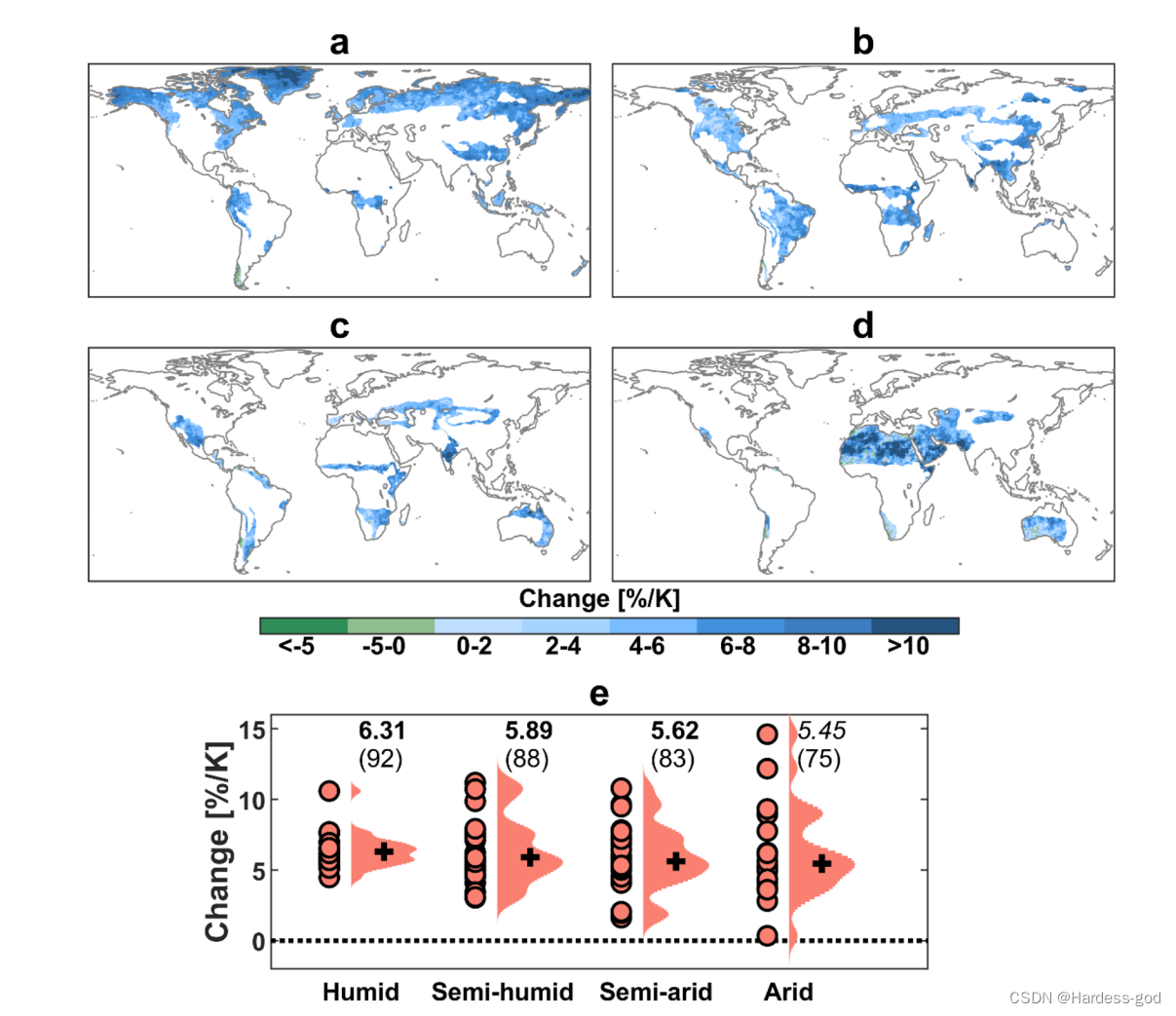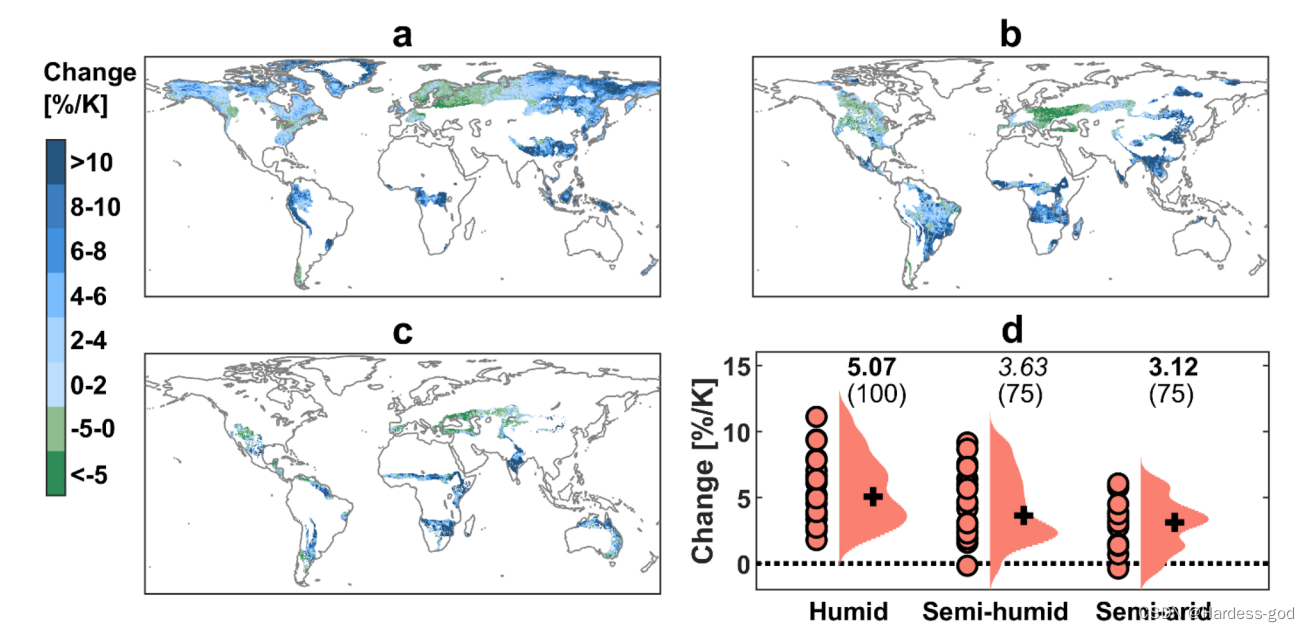The Impact of Climate Change on Floods and Droughts: Water Availability Dynamics
Abstract
The article under discussion delves into the impacts of climate change on the water cycle, emphasizing the growing emissions of greenhouse gases as a key factor. It examines a study by Hossein Tabari, featured in "Scientific Reports" in 2020, which sheds new light on how climate change influences extreme weather phenomena and water accessibility. This research specifically investigates the escalation of severe climate-related incidents like floods and droughts, highlighting regional variations in these effects due to differing water availabilities. The study's results are vital for grasping the wider effects of climate change on worldwide water resources and for formulating effective disaster management approaches.
- Introduction
Climate change's effects have grown increasingly visible during the last two decades, particularly through more frequent and violent floods and droughts. These aren't merely environmental concerns but have profound impacts on human populations globally. Mujumdar's research has shown this serious situation, and it reveals that floods have affected an estimated 1.65 billion people and droughts have impacted 1.43 billion. These figures are a clear indication of the extensive and serious nature of these climatic events. Understanding these shifts is imperative for preparing to meet the challenges of a warming world. It's significant to develop strategies to adapt and thrive in this evolving landscape, focusing particularly on effective water management. This includes addressing the challenges posed by both the overabundance of water in floods and its scarcity during droughts (Mujumdar,2020).
- Background and Previous Work
The traditional view of climate change's impact on the hydrological cycle primarily focuses on the simple increase in the atmosphere's water-holding capacity due to rising temperatures. This process has been widely expected to lead to more intense precipitation events and subsequent flooding (Kundzewicz, 2008). However, as the climate continues to change, water may go through land, oceans, and the atmosphere to the otherwhere. It is challenging the assumption that the past behavior of our water resources can directly predict the future. The Geophysical Fluid Dynamics Laboratory (GFDL) has been at the forefront of research in this area, focusing on understanding how the hydrologic cycle changing. The full earth-atmosphere system keeps changing in the coming decades and how the hydrologic cycle fits this situation is a new topic (Li, X, 2022).
Research by the Li et al. has addressed issues such as the notion of static questions like water supplies, floods, and droughts. Predecessors may believe in the future the frequency of occurrence of these situations will not change, as well as the interplay between energy balance and the global hydrologic cycle. However, this opnion is incorrect. The frequency of these occurrences is significantly higher due to other factors such as the greenhouse effect. Process-based studies by Li at el. have also examined the role of land surface on climate, including the regional impact of land-use change and the relationships between surface fluxes of heat and moisture and atmospheric processes like convection and precipitation (Li, X,2022).
Additionally, the latest report from the sixth Intergovernmental Panel on Climate Change (IPCC) underscores the impact of global warming on the worldwide hydrological cycle on land. This report highlights the varied regional effects and notes the inconsistencies in these changes. These discrepancies largely stem from the absence of a thorough, observation-based evaluation of concurrent trends in various aspects of the hydrological cycle. Hobeichi provides a comprehensive analysis of the hydrological cycle and vegetation greenness trends between 1980 and 2012. He noticed significant changes in the hydrological cycle were observed across over 50% of land areas, with evapotranspiration changing the most and precipitation the least. Meanwhile, the most noticeable change was in evapotranspiration (ET), while precipitation (P) exhibited the least variation. He noticed a new finding on trends: Instances of clear trends in evapotranspiration and runoff were found without corresponding robust trends in precipitation, supporting the notion that "wet gets wetter, but dry does not get drier" (Hobeichi, 2022).
Regarding regional shifts, Afzal et al. focused on the Ebbw catchment in Wales, UK, using data from 1961–2012 in the DiCaSM model. Their study observes that changes in ET and runoff (Q) are more prevalent compared to variations in precipitation. This indicates that these trends are influenced not just by changes in P, but also by factors like atmospheric demand, vegetation's reaction to elevated CO2 levels, and human activities such as alterations in land use and cover. Interestingly, in regions where P increases, a majority of the ET trends also show a positive direction. Meanwhile, they noticed that the greatest decrease in groundwater recharge and streamflow is expected in the 2050s and 2080s, especially under high-emission scenarios. The severity and frequency of drought events are anticipated to be higher under medium and high-emission scenarios (Afzal, 2020).
The World Meteorological Organization's recent report outlines the impact of climate change on the hydrological cycle. It emphasizes the importance of understanding and managing freshwater resources, noting that over 50% of global catchment areas have deviated from normal conditions, often drier. Additionally, the report highlights increased evapotranspiration and decreased soil moisture in regions like Europe, affecting rivers and energy production. In contrast, parts of Asia and Africa experienced severe droughts and floods, impacting millions. This calls for a comprehensive approach to water management, considering regional variations and the frequency of extreme weather events (World Meteorological Organization.,2022).
These findings all show the complexity of the hydrological cycle's response to climate change, necessitating a multifaceted approach to water management and policy development. According to previous research, it is necessary to consider regional variations, the increasing frequency of extreme weather events, and the interconnectedness of climate, environmental, and societal factors. Hossein Tabari's study is an example in reaching the hydrological cycle from multiple aspects.
3. Hossein Tabari's Study: Advances and Methodology
Hossein Tabari in 2020 make deep research on how climate change affects extreme hydrological occurrences. The research stands out for its thorough analysis of the connections between variations in extreme rainfall, the severity of floods, and the availability of water in the future as the 21st century draws to a close. Tabari's research shows the extensive and grave nature of these climatic changes. He uses MTALAB toolbox to complete the climate prediction in different climate regions.
Tabari's methodology was comprehensive and robust, employing an extensive array of simulations. Twenty-four global climate models (GCMs) from the fifth phase of the Coupled Model Intercomparison Project (CMIP5) were included in the analysis. This wide range of models provided a more sophisticated knowledge of the geographical variations in the impacts of climate change. As shown in Figure 1, Tabari used the MATLAB mapping toolbox to make the aridity index and its expected future changes, which includes five climates (i.e. humid, semi-humid, arid, and semi-arid ). He then calculated future climates for the next 30 years, from 2070 to 2099, and generated the spatial distribution of five climate regimes based on the aridity index of the historical previous 30 years, from 1971 to 2000. These are shown in (a) and (b) in Figure 1. Meanwhile, he made a projected change in area coverage of five climates also by using MATLAB toolbox according to the (1971- 2000) climate data, which is shown in Figure (c). Finally, he made prediction about median projected area coverage of this area during 2070 to 2099. The study used the aridity index (AI), a measure that considers the balance between potential evapotranspiration and precipitation. This was crucial for addressing the expected shifts in climatic zones due to global warming and for considering variations among the different models. (Tabari, 2020).

Figure 1 Aridity index and its expected future changes. (a) historical (1971–2000) and (b) future (2070–2099) climates. (c) Projected change during the period 2070–2099 compared with the historical (1971-2000) situation and (d) Each of the five climate regimes in percent of the total terrestrial land area of (2070–2099) estimation
Additionally, the study innovatively assessed changes in flood risks using two different hazard assessment methods based on the multi-model ensemble. This comprehensive strategy addressed all significant uncertainties, particularly the potential for underestimating changes in flood levels when depending just on one hydrological model. The spatial distributions of changes in extreme precipitation intensity throughout various climatic regions, including humid, semi-humid, semi-arid, and arid between 2070 and 2099. These four regions represent the potential for flooding or drought in fact. Meanwhile, these climate situations are determined by two distinct approaches (different climate zones), which are displayed in Figures 2 and 3. According to the image, there will likely be more intense precipitation due to global warming, particularly in humid and semi-humid areas. The robustness of the projections is indicated by the high degree of agreement (92% agreement) among the models on the sign of change in the humid regions in Figure 2. All categories show statistically significant changes, indicating that the changes are consistent with the model's predictions of the effects of climate change rather than being the result of random variation.

Figure 2 Distribution of changes in extreme precipitation intensity across different types of climatic regions: (a) humid, (b) semi-humid, (c) semi-arid, (d) arid, and (e) Changes per climate regime in 2070–2099.
Figure 3 illustrates how flood intensity is predicted to rise dramatically under a high emissions scenario in humid regions and noticeably less in semi-humid and semi-arid regions under the RCP8.5 situation. The RCP8.5 means a specific scenario when the radiative forcing level reaches 8.5 W/m^2. This is people's current projections of the future climate situation in the climate if people don't take effective action to face climate change. The unanimous agreement among models for the humid region indicates high confidence in these projections, while there is a slightly lower agreement for semi-humid and semi-arid regions (75% agreement). The analysis excludes grid cells with annual maxima close to 0 cubic meters per second (m³ s⁻¹) from the historical model period, as these would not be relevant for flood intensity changes.

Figure 3 Distribution of changes in extreme precipitation intensity across different types of climatic regions: (a) humid, (b) semi-humid, (c) semi-arid, and (d) Changes per climate regime in 2070–2099 under RCP8.5, compared with 1971–2000.
4. Key Findings and Implications
Tabari's 2020 research marks a significant advance in comprehending how climate change differently affects hydrological extremes in various regions. One key observation from the study is the uneven intensification of extreme weather phenomena, such as heavy rainfall and flooding, across diverse geographic areas. The research highlights that regions with greater water availability witness a more pronounced increase in extreme precipitation and flood events than drier areas. This disparity is crucial for regional development and disaster management strategies, suggesting that climate change impacts will be distinct across areas with different levels of water availability, necessitating tailored adaptation and mitigation approaches.
Moreover, the study brings to light that the escalation of extreme precipitation events can heighten the severity and frequency of floods. This increase poses considerable challenges to aquatic and terrestrial ecosystems, human societies, and economies. The research emphasizes that the variation in flood characteristics is influenced not just by the distribution and temporal changes in precipitation but also by factors like prior soil moisture conditions and the timing of snowmelt in regions with significant snow cover. This complex interaction reveals that flood alterations are connected to a variety of factors, including regional climatic moisture shifts. (Tabari, 2020).
Furthermore, Tabari's study, under different climate sensitivities of the CMIP5 GCMs, predicts an overall increase in flood intensity globally with notable differences across various climate zones (whether considering the RCP8.5 situation or not) . The result as shown in Figure 2 and Figure 3 above, in sharp contrast to smaller percentages in semi-arid and semi-humid regions, around 75.9% of land in humid areas is anticipated to face an increase in flood severity. This research emphasizes how crucial it is to take into account a variety of flood-causing factors, including precipitation, soil moisture, and snowmelt, when assessing flood risks in light of various climate change scenarios (Tabari, 2020). Comparing Figure 2 and Figure 3, it is obvious that the probability of humidity happening will increase under the RCP8.5. People need to take measures to face this serious situation.
5. Conclusion and Future Directions
Understanding the effects of climate change on the world, particularly as they relate to water supply and the occurrence of floods and droughts, is made easier with the help of Tabari's research. It demonstrates that not all areas will experience the same consequences of climate change; events in one area may differ significantly from those in another. Planning how we use our water resources and becoming ready for floods depends on this. In the future, studies should continue examining the interplay between water supply, climate change, and extreme weather events like floods and droughts. This will assist us in devising more effective strategies to address these issues, bearing in mind that local conditions may require different approaches. It is more important than ever to comprehend and adjust to these regional variations in water dynamics as we continue to deal with the effects of a changing climate.
Tabari's research shows the extensive and grave nature of these climatic changes. In my view, adapting to these shifts is imperative in the face of a warming world. It involves not just recognizing the problem but actively developing strategies to mitigate and adapt to these changes. Central to this is the need for effective water management, a critical aspect in both flood and drought scenarios. In areas experiencing floods, the focus is on managing the overabundance of water, preventing damage to infrastructure, and safeguarding human health and agriculture. Conversely, in regions facing droughts, the challenge lies in efficiently managing scarce water resources to sustain communities and prevent ecological damage.
References
Afzal, M., & Ragab, R. (2020). How do climate and land use changes affect the water cycle? Modelling study including future drought events prediction using reliable drought indices. Irrigation and Drainage, 69(4), 806-825.
Hobeichi, S., Abramowitz, G., Ukkola, A. M., De Kauwe, M., Pitman, A., Evans, J. P., & Beck, H. (2022). Reconciling historical changes in the hydrological cycle over land. npj Climate and Atmospheric Science, 5(1), 17.
Li, X., Tan, L., Li, Y., Qi, J., Feng, P., Li, B., ... & Chen, Y. (2022). Effects of global climate change on the hydrological cycle and crop growth under heavily irrigated management–A comparison between CMIP5 and CMIP6. Computers and Electronics in Agriculture, 202, 107408.
Mujumdar, M., Bhaskar, P., Ramarao, M. V. S., Uppara, U., Goswami, M., Borgaonkar, H., ... & Niyogi, D. (2020). Droughts and floods. Assessment of climate change over the Indian region: a report of the Ministry of Earth Sciences (MoES), Government of India, 117-141.
Kundzewicz, Z. W. (2008). Climate change impacts on the hydrological cycle. Ecohydrology & Hydrobiology, 8(2-4), 195-203.
Tabari, H. (2020). Climate change impact on flood and extreme precipitation increases with water availability. Scientific reports, 10(1), 13768.
World Meteorological Organization. (2022). State of Global Water Resources 2022. Retrieved from UN News.























 532
532











 被折叠的 条评论
为什么被折叠?
被折叠的 条评论
为什么被折叠?










